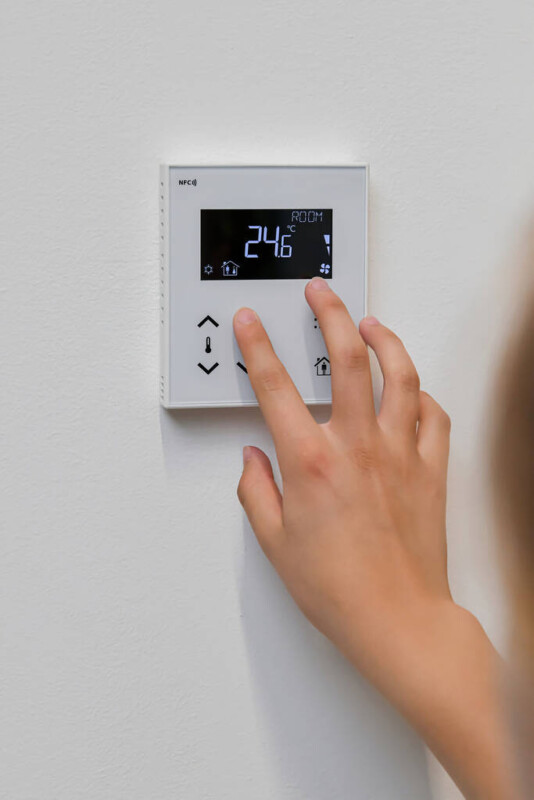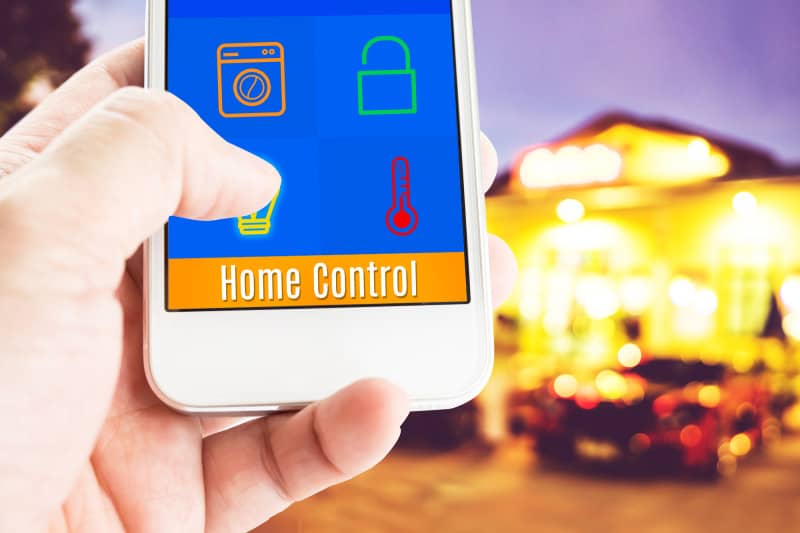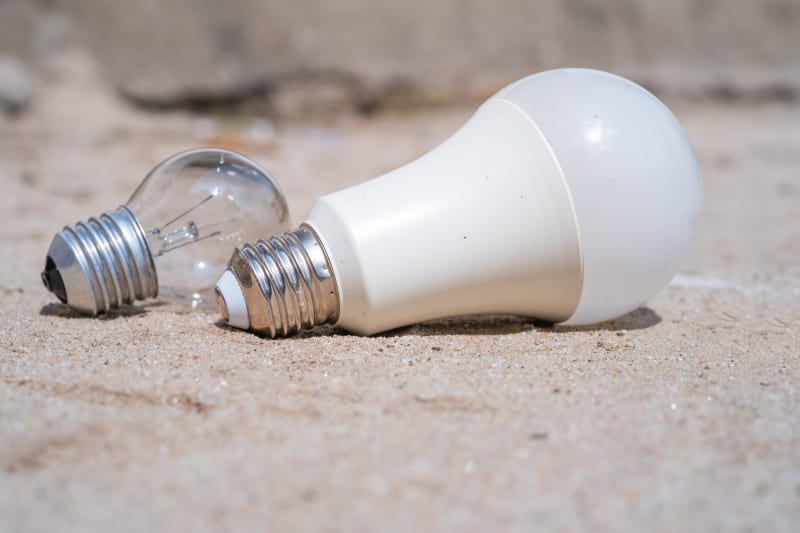You can cut your energy bills by an average of 10–15% with thermostats that learn occupancy patterns, fine-tune comfort using geofencing, and automatically adjust schedules based on your behavior.
Some brands report savings up to 23% in optimal conditions, but typical reductions are in the low to mid-teens.
These devices tap into real-time weather data for predictive changes and provide detailed energy reports, revealing insights that help you save more.
With smart features like remote access and machine learning, smart thermostats enhance every aspect of home climate control. Uncover the exact methods that elevate savings and comfort next.
Key Takeaways
- Smart thermostats use occupancy sensors and machine learning to automatically reduce heating or cooling when rooms are unused.
- Geofencing technology adjusts home temperature based on your location, minimizing energy use when you’re away.
- Automatic scheduling tailors temperature settings to your daily routines, reducing energy bills during sleep or absence.
- Integration with real-time weather data allows predictive adjustments, optimizing comfort and lowering unnecessary HVAC usage.
- Detailed energy reports provide actionable insights, helping you identify savings opportunities and track usage patterns for ongoing efficiency.
Learning and Adapting to Occupancy Patterns
As smart thermostats become more advanced, they’re leveraging occupancy sensors and adaptive algorithms to optimize temperature control and cut energy costs.
You’ll benefit from devices that detect presence using infrared, ultrasonic, or microwave sensors, which track occupancy trends throughout your home.
By identifying when rooms are occupied or vacant, your thermostat automatically adjusts temperatures, reducing unnecessary heating or cooling.
These adaptive settings guarantee your HVAC system only operates when needed, leading to average energy savings of about 10–15% for most users, with some brands reporting up to 23% in the best cases.
Machine learning enables the thermostat to learn your routines, fine-tuning temperature schedules based on real-time data. As a result, you enjoy improved comfort, significant cost savings, and a reduced environmental footprint—without constant manual intervention.
Utilizing Geofencing and Remote Access
While smart thermostats already adapt to occupancy patterns, geofencing and remote access take energy management a step further by leveraging your location and real-time controls.
Geofencing benefits include automatic HVAC adjustments—your thermostat uses GPS to detect when you leave or return, reducing unnecessary heating or cooling.
This can contribute to energy savings within the typical 10–15% range for most users, with the highest reported savings (up to 23%) occurring in optimal scenarios.
With remote access advantages, you can monitor and adjust your thermostat from anywhere, ensuring efficient operation even if your schedule changes unexpectedly.
Real-time data and multi-user support make managing your comfort straightforward, while secure logins and alerts protect your system.
Combined, these features simplify thermostat management, integrate with smart homes, and provide detailed energy usage insights for ongoing savings.
Implementing Smart Scheduling and Automatic Adjustments
Even minor adjustments to your home’s heating and cooling schedule can yield significant savings when you implement smart scheduling and automatic thermostat adjustments.
Smart thermostats utilize learning algorithms and advanced sensors to maintain a precise smart temperature, adapting to your daily routines.
By automatically adjusting settings when your home is unoccupied or during sleep, these devices can help reduce energy bills by an average of 10–15% per year, according to independent studies and industry reports.
Flexible scheduling via user-friendly apps lets you quickly tailor settings to your changing lifestyle, ensuring energy isn’t wasted. Maintaining consistent temperatures not only improves comfort but also cuts unnecessary HVAC cycles, enhancing energy efficiency.
Over time, your thermostat learns your preferences, continuously refining performance to increase savings. Embracing these features results in year-round, data-driven cost reductions.
Integrating Real-Time Weather and External Data
Many advanced smart thermostats now utilize real-time weather forecasts and external data to enhance your home’s climate control with remarkable precision.
By integrating weather forecasting, these devices make predictive adjustments—such as pre-warming your space before a cold front hits or cooling in anticipation of a heatwave—ensuring comfort and reducing energy spikes.
Smart thermostats use weather forecasts to anticipate changes, adjusting temperatures ahead of time for comfort and reduced energy surges.
Real-time climate data, including neighborhood temperature sensors, can improve temperature prediction accuracy by up to 8% and HVAC runtime efficiency by 26%.
Some thermostats also incorporate air quality sensors, allowing you to maintain ideal indoor conditions while minimizing energy waste.
Solar irradiance measurements further refine heating and cooling decisions based on sunlight intensity.
With Wi-Fi connectivity and machine learning, your thermostat adapts continuously, maximizing energy efficiency and contributing to significant long-term savings.
Providing Detailed Energy Usage Reports and Insights
Alongside real-time weather integration, smart thermostats empower you with detailed energy usage reports that turn raw data into actionable insights.
You can directly monitor your energy consumption, track usage trends, and make informed adjustments to enhance efficiency. These reports are accessible via mobile apps and often include visualizations for easy interpretation.
By leveraging advanced analytics, you’ll identify inefficiencies and receive personalized recommendations. Here’s how these reports help you:
- Analyze monthly summaries comparing heating and cooling hours across periods.
- Highlight factors—like weather or manual settings—that drive energy consumption.
- Offer custom insights based on your individual patterns and usage trends.
- Provide maintenance alerts and educational content for ongoing optimization.
This data-driven approach supports proactive energy management, enabling you to cut unnecessary costs and improve efficiency.
Conclusion
By leveraging your thermostat’s smart features—like adaptive learning, geofencing, and real-time weather integration—you’ll guarantee your HVAC system runs only when needed.
With automated schedules and detailed energy reports, you can identify savings opportunities and fine-tune your settings for maximum efficiency.
These proven strategies let you take control of your energy use, cut unnecessary costs, and maintain comfort.
Invest in these solutions, and you’ll see measurable reductions in your energy bills month after month.



